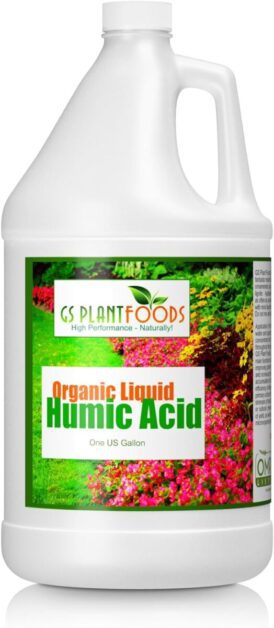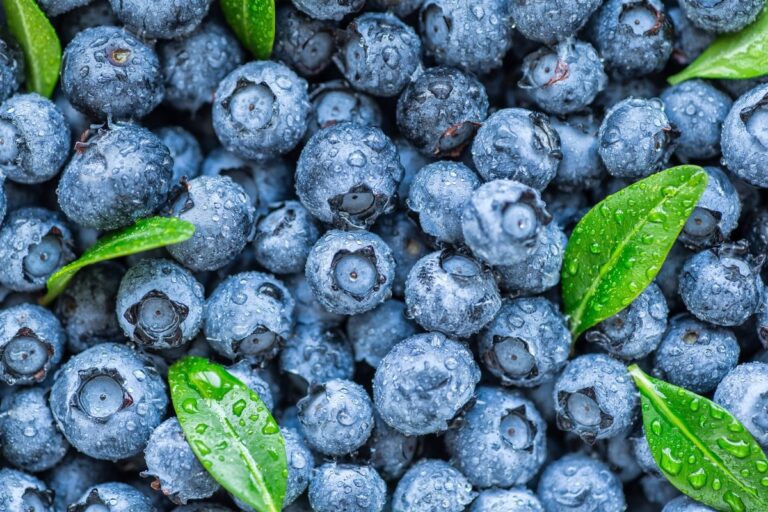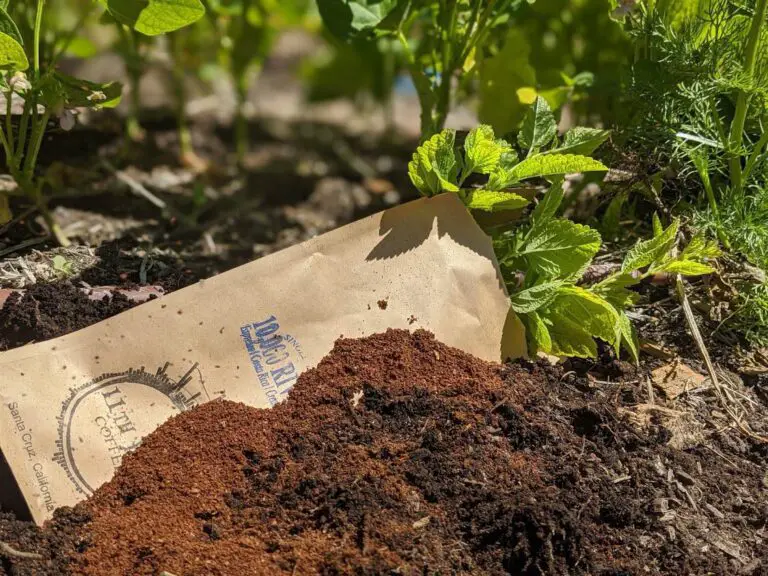Humic Acid vs Fulvic Acid: What They Are, How They Work, and How to Use Them for Your Plants
Ever wondered what gives plants their incredible vitality? Enter humic acid and fulvic acid, two superheroes in the world of plant nutrition. But what are they, exactly? How do they work their magic? And most importantly, how can you harness their power for your own green kingdom? In this guide, we’ll delve into the fascinating world of humic and fulvic acids, exploring their roles, functions, and practical applications in plant care. Whether you’re a seasoned gardener or just starting out, understanding these natural wonders will elevate your plant game to new heights. Get ready to unlock the secrets of plant power like never before!
Table of Contents
The Basics of Soil Amendments: Enhancing Nutrient Availability and Plant Growth
Soil amendments play a crucial role in enhancing the availability of nutrients and promoting healthy plant growth. These amendments are often added to improve soil fertility, structure, and microbial activity, ultimately creating an ideal environment for plant roots to thrive. By understanding the basics of soil amendments, gardening enthusiasts can maximize the potential of their plants and achieve bountiful harvests.

- Nutrient Availability Enhancement:
- Soil amendments serve to improve the availability of essential nutrients to plants.
- When nutrients are present in a form that plants can easily access, they can efficiently take up these nutrients for growth and development.
- Types of Soil Amendments:
- Organic Matter: Adding organic materials like compost, well-rotted manure, or leaf litter enriches the soil with nutrients.
- Compost: Composting organic waste creates nutrient-rich material that enhances soil fertility.
- Fertilizers: Commercial fertilizers provide specific nutrients (e.g., nitrogen, phosphorus, potassium) in concentrated forms.
- Nutrient Functions:
- Nitrogen (N):
- Essential for chlorophyll production during photosynthesis.
- Promotes leafy growth and overall plant vigor.
- Phosphorus (P):
- Vital for energy transfer (adenosine triphosphate, ATP) and cell division.
- Supports root development and flowering.
- Potassium (K):
- Regulates water balance within cells.
- Enhances disease resistance and overall plant health.
- Nitrogen (N):
- Building Blocks for Plant Cells:
- These nutrients act as building blocks for plant cells, contributing to their structure and function.
- Proteins, enzymes, and other cellular components rely on these essential elements.
- Root System Development:
- Adequate nutrients encourage robust root growth.
- Strong root systems improve nutrient uptake and water absorption.
- Water-Holding Capacity:
- Soil amendments enhance the soil’s ability to retain water.
- This helps maintain consistent moisture levels for plant roots.
- Nutrient Release:
- Amendments can also regulate nutrient release.
- They prevent leaching and ensure nutrients are available when plants need them.
In conclusion, understanding the basics of soil amendments is crucial for gardening enthusiasts looking to optimize nutrient availability and promote healthy plant growth. By choosing the right amendments and incorporating them into their gardening practices, they can create an environment that supports plant vitality, leading to thriving crops and beautiful gardens.
Exploring the World of Organic Compounds: Humic Acid and Fulvic Acid
Humic acid and fulvic acid are two organic compounds that play a crucial role in soil health and plant growth. These substances are derived from organic matter, such as decomposed plant and animal materials, and are known for their ability to enhance nutrient availability and promote plant metabolism.
Humic acid

Humic acid is a complex mixture of organic molecules that can be found in various soil types. It is primarily composed of humic substances, which consist of carbon, hydrogen, oxygen, nitrogen, and small amounts of other elements. One of the key characteristics of humic acid is its ability to improve soil structure by enhancing aggregation and stability. This, in turn, helps to increase water infiltration and retention, reduce erosion, and promote root development.
Fulvic acid
Fulvic acid, on the other hand, is a smaller molecular fraction of humic substances that exhibits distinct properties. It is highly soluble in water and possesses a high cation exchange capacity, allowing it to bind with essential plant nutrients and facilitate their uptake by plants. Fulvic acid also acts as a chelating agent, forming stable complexes with micronutrients and making them more readily available to plants. Additionally, it can enhance plant metabolism by stimulating enzyme activity and improving nutrient assimilation.
In the following sections, we will delve deeper into the specific benefits and mechanisms of action of humic acid and fulvic acid. By understanding their unique properties, we can unlock the full potential of these organic compounds in improving soil fertility and supporting healthy plant growth.
The Organic Liquid Humic Acid has been a game-changer for my plants. Its potent formula revitalizes soil health, promoting robust root development and enhancing nutrient uptake. While the initial application may come with a strong odor, the long-term benefits outweigh this inconvenience. With regular use, I’ve noticed improved plant vigor and resilience, even in challenging growing conditions.
However, it’s essential to handle it with care due to its potential for staining and ensure thorough mixing for optimal solubility. Despite these minor drawbacks, its effectiveness in nurturing healthier, more vibrant plants makes it a valuable addition to any gardener’s toolkit. Overall, the Organic Liquid Humic Acid offers a natural and effective solution for enhancing plant growth and soil vitality.
✅ High Concentration: Comes in a concentrated form, providing excellent value for money as it can be diluted for multiple applications.
✅ Soil Amendment: Acts as a soil conditioner, improving soil structure, nutrient uptake, and water retention.
✅ Plant Growth Stimulant: Stimulates root development and enhances overall plant growth, leading to healthier and more vigorous plants.
✅ Versatile: Suitable for use on a wide range of plants, including vegetables, fruits, flowers, and ornamentals.
✅ Easy Application: Can be easily applied to soil or used as a foliar spray, offering flexibility in application methods.
❌ Potential Staining: Due to its dark color, there is a risk of staining surfaces during application, so care must be taken to avoid spills.
❌ Slow Results: While humic acid provides long-term benefits to soil health, it may take some time to see visible improvements in plant growth and performance.
❌ Not Instant Solubility: It may require thorough mixing or agitation to ensure complete solubility in water, which can be time-consuming.
❌ Limited Availability: Availability may vary depending on location, making it challenging for some users to purchase locally.
Unveiling the Benefits of Humic Acid: Promoting Soil Structure and Nutrient Retention
Humic acid, a naturally occurring organic compound found in soil, holds immense benefits for promoting soil structure and enhancing nutrient retention. Its presence in the soil helps to create a favorable environment for plant growth by improving physical and chemical properties.

- Soil Structure Enhancement:
- Humic acid acts as a binder, binding soil particles together to form aggregates.
- These aggregates improve soil porosity, allowing for proper aeration and water infiltration.
- Enhanced soil structure facilitates root penetration, leading to better nutrient uptake and root development.
- It also helps prevent soil erosion and compaction, promoting healthier and more resilient plants.
- Nutrient Retention:
- High Cation Exchange Capacity (CEC):
- Humic acid has a high CEC, which means it can attract and hold positively charged nutrients.
- Negatively charged humic acid molecules bind to ions like calcium, magnesium, and potassium.
- This prevents nutrient leaching away from the root zone.
- Sufficient Nutrient Supply:
- Nutrient retention ensures a steady supply of essential elements for plant growth.
- It reduces the risk of nutrient runoff, protecting the environment from contamination.
- High Cation Exchange Capacity (CEC):
- Optimizing Plant Nutrition:
- Promoting Nutrient Availability:
- By retaining nutrients, humic acid enhances their availability to plants.
- It supports overall plant health and maximizes crop productivity.
- Minimizing Nutrient Losses:
- Humic acid minimizes nutrient losses due to leaching.
- This contributes to efficient nutrient utilization by plants.
- Promoting Nutrient Availability:
Furthermore, its capacity to retain essential nutrients safeguards against nutrient losses and enhances overall plant health. Incorporating humic acid into gardening practices can yield numerous advantages, both for the plants and the environment.
The Power of Fulvic Acid: Boosting Nutrient Absorption and Plant Metabolism
Fulvic acid, a natural compound derived from humus deposits, has gained significant attention in the world of plant nutrition due to its ability to enhance nutrient absorption and plant metabolism. This powerful substance acts as a chelating agent, forming complexes with essential minerals and trace elements in the soil, making them more readily available for plant uptake.

In summary, the power of fulvic acid lies in its remarkable ability to boost nutrient absorption and plant metabolism. By improving nutrient availability and facilitating efficient nutrient uptake, it supports the optimal growth and development of plants. Its role in enhancing plant metabolism further contributes to healthier and more productive crops. As gardeners and plant enthusiasts continue to explore the potential of fulvic acid, its benefits in promoting plant health and vitality are becoming increasingly recognized.
Comparing Humic Acid and Fulvic Acid: Similarities and Differences
Humic acid and fulvic acid are both organic compounds that play a crucial role in soil health and plant growth. While they share some similarities, they also have distinct differences that affect their functionality in agricultural practices.
| Characteristic | Humic Acid | Fulvic Acid |
|---|---|---|
| 1. Source and Composition | – Organic Matter: Derived from decayed plant material. | – Organic Matter: Result of further breakdown of humic substances. |
| – Complex Structure: Larger molecules with complex structures. | – Smaller Molecules: Smaller and simpler molecular structures. | |
| – Insolubility: Generally less soluble in water. | – Greater Solubility: Highly soluble in water, forming colloidal solutions. | |
| 2. Color and Appearance | – Dark Brown to Black: Typically has a darker color. | – Lighter Color: Often has a lighter, golden to amber color. |
| – Solid Form: Available in solid form (humates). | – Liquid Form: Often available in liquid form for easy application. | |
| 3. Molecular Weight | – Higher Molecular Weight: Larger molecules. | – Lower Molecular Weight: Smaller molecules. |
| 4. Solubility in Water | – Lower Solubility: Less soluble in water. | – High Solubility: Highly soluble, even in low-pH conditions. |
| – Requires Longer Breakdown: Slow breakdown over time. | – Rapid Breakdown: Quickly dissolves and remains in solution. | |
| 5. Nutrient Chelation | – Chelating Properties: Binds and chelates nutrients. | – Effective Chelator: Exhibits strong chelating capabilities. |
| – Slow Release: Releases nutrients over an extended period. | – Rapid Release: Can quickly release bound nutrients to plants. | |
| 6. Soil Structure Improvement | – Enhanced Structure: Improves soil structure and water retention. | – Promotes Aeration: Enhances soil aeration and nutrient absorption. |
| 7. Plant Growth Stimulation | – Root Development: Supports root growth and development. | – Stimulates Growth: Promotes overall plant growth and vigor. |
| – Auxin-Like Effects: May have auxin-like effects. | – Enzyme Activation: Activates various enzymes in plants. | |
| 8. Impact on Soil Microbes | – Microbial Activity: Enhances microbial activity in the soil. | – Microbial Relationships: Supports beneficial microbial interactions. |
| – Feeds Microorganisms: Serves as a carbon source for soil microbes. | – Microbial Nutrient Cycling: Facilitates nutrient cycling by microbes. | |
| 9. Environmental Stability | – Stable in Soil: Relatively stable in the soil. | – Biologically Active: Highly biologically active and may degrade more quickly. |
| 10. Application Methods | – Soil Application: Commonly applied to soil. | – Foliar Spray: Can be applied directly to plant leaves. |
| – Compatibility: May be less compatible with certain fertilizers. | – Compatible with Fertilizers: Often compatible with various fertilizers. |
Understanding the similarities and differences between humic acid and fulvic acid is vital for optimizing their application in plant care routines. By considering their unique characteristics, gardeners and agriculturalists can make informed decisions to improve soil fertility, nutrient availability, and ultimately enhance the overall health and growth of plants.
An Inside Look into Humic Acid: Composition and Characteristics
Humic acid is a key player in the world of soil amendments, offering numerous benefits to support plant growth. Understanding its composition and characteristics is essential for harnessing its potential in gardening and agriculture.
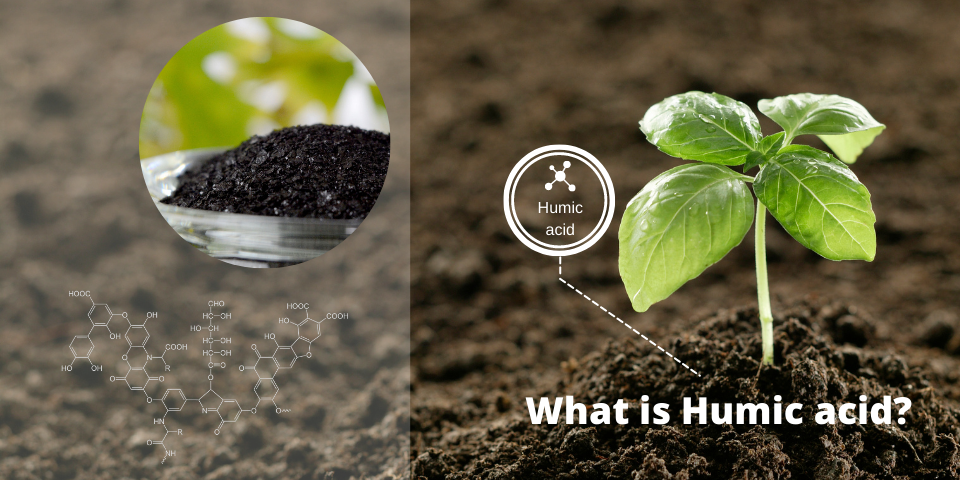
- Composition and Origin:
- Derived from Organic Matter: Humic acid results from the natural decomposition of organic materials, including plants, animals, and microorganisms.
- Complex Mixture: It comprises various organic compounds, including humins, humic acids, and fulvic acids.
- Dark Color: The presence of these substances contributes to the dark color of humic acid.
- Valuable Soil Addition:
- Solubility: Humic acid is highly soluble in water.
- Nutrient Holding and Release: It can hold and release essential nutrients, making them more accessible to plants.
- Soil Structure Enhancement:
- Improves aggregation and porosity, leading to better water retention and aeration.
- Facilitates root penetration and overall plant health.
- Beneficial Microorganisms: Stimulates beneficial microorganisms in the soil, creating a symbiotic relationship that supports plant growth.
By incorporating humic acid into gardening practices, enthusiasts can expect improved nutrient availability, increased plant resilience, and enhanced overall soil health.
Demystifying Fulvic Acid: Origins and Properties
Fulvic acid is a substance that has gained significant attention in the realm of plant nutrition and health. But where does it come from, and what are its unique properties? Let’s demystify fulvic acid by exploring its origins and properties.

- Natural Decomposition: Fulvic acid originates from the natural decomposition of organic matter, forming part of humic substances created through the breakdown of plant and animal materials.
- Humification Process: Fulvic acid is derived from the humification process, where organic matter transforms into stable humus over time.
- Distinct Properties: Fulvic acid stands out due to its low molecular weight and high solubility, which give it excellent chelating properties.
- Chelating Abilities: Fulvic acid can bind to essential nutrients like iron, calcium, and magnesium, making them easily accessible for plant absorption.
- Functional Groups: Fulvic acid contains various functional groups such as carboxylic and phenolic groups, contributing to its ability to enhance nutrient uptake and stimulate plant metabolism.
- Soil and Plant Health: The unique properties of fulvic acid make it essential for maintaining soil fertility and promoting healthy plant growth.
Understanding the origins and properties of fulvic acid lays the foundation for harnessing its potential in promoting healthy plant growth. By harnessing the power of this natural substance, gardeners and agronomists can unlock the benefits of improved nutrient availability, enhanced nutrient absorption, and increased plant vitality. Now that we’ve demystified fulvic acid, let’s delve deeper into its functionality and its interactions with plants.
Understanding the Mechanisms of Action: How Humic Acid Works in the Soil
Humic acid is a soil amendment that plays a vital role in improving soil health and plant growth. Understanding how humic acid works in the soil can help gardeners and farmers make informed decisions about its use.
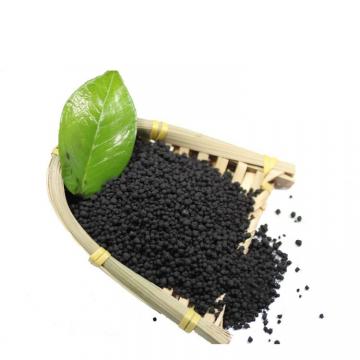
- Nutrient Availability Enhancement:
- Chelation: Humic acid acts as a chelator, forming complex compounds with essential plant nutrients (e.g., nitrogen, phosphorus, potassium).
- These complexes prevent nutrient leaching, ensuring nutrients remain available for plant uptake.
- Release of Bound Nutrients: Humic acid promotes the release of nutrients bound in the soil, making them more accessible to plant roots.
- Increased nutrient availability is crucial for optimal plant growth and development.
- Soil Structure Improvement:
- Soil Conditioner: When applied, humic acid acts as a soil conditioner.
- Aggregate Stability: It enhances soil aggregate stability, leading to improved soil structure.
- Water Infiltration and Retention: Better soil structure allows for improved water infiltration and water-holding capacity.
- Conducive Environment for Roots: Enhanced soil structure supports root growth and nutrient uptake by plants.
- Nutrient Retention:
- Humic acid aids in retaining nutrients in the soil, reducing the risk of nutrient loss through runoff or leaching.
By understanding the mechanisms of action of humic acid in the soil, gardeners and farmers can harness its potential to enhance nutrient availability, promote soil structure, and ultimately improve plant health and productivity. The next section will delve deeper into the functionality of fulvic acid and its impact on plant nutrition and metabolism.
Decoding Fulvic Acid’s Functionality: How it Interacts with Plants
Fulvic acid is a powerful tool for enhancing plant growth and health, thanks to its unique functionality and interactions with plants.

- Nutrient Availability Enhancement:
- Chelation: Fulvic acid forms complexes with essential nutrients (e.g., potassium, calcium, magnesium).
- These complexes enhance nutrient availability for plant uptake.
- Improved nutrient absorption and overall plant metabolism lead to enhanced growth and productivity.
- Soil Structure Improvement:
- Molecular Structure: Fulvic acid binds and chelates metal cations.
- Nutrient Retention: Prevents nutrient leaching and promotes retention in the root zone.
- Aggregation Enhancement: Improves soil aggregation, aiding water infiltration and aeration.
- Healthy root development benefits from these soil improvements.
- Considerations:
- Effectiveness Factors: Soil pH, organic matter content, and microbial activity impact fulvic acid’s effectiveness.
- Plant Variability: Different plant species may respond differently to fulvic acid.
- Thorough Research: Consider specific plant and soil requirements when using fulvic acid.
By understanding how fulvic acid interacts with plants, gardeners and agricultural professionals can harness its potential to optimize nutrient uptake and achieve healthier, more productive plants.
Practical Applications: How to Incorporate Humic Acid into Your Plant Care Routine
Humic acid, derived from organic matter such as decaying plant material, has gained popularity for its numerous benefits in plant care. Incorporating humic acid into your plant care routine can be a simple and effective way to enhance nutrient availability and promote healthy plant growth.
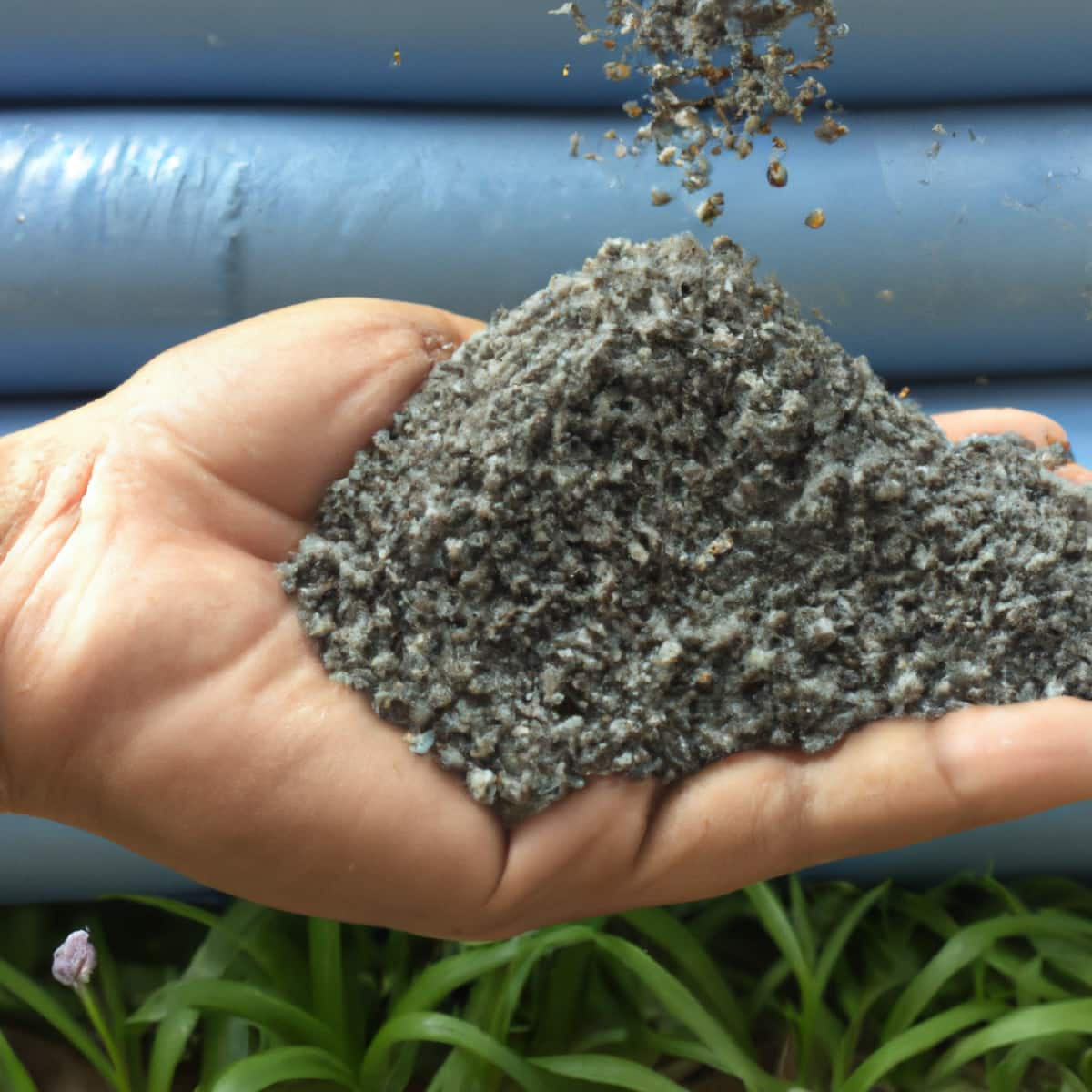
By harnessing the power of this organic compound, you can take your gardening endeavors to new heights and achieve flourishing, bountiful plants. Stay tuned for more insights into the world of humic acid and its remarkable benefits for plant health.
I recently tried SUPERthrive Plant Vitamin Foliar Spray along with humic acid for my plants, and I must say, the results were impressive. The combination of SUPERthrive’s essential vitamins and hormones, along with the benefits of humic acid, resulted in noticeably healthier and more resilient plants. Not only did I observe faster growth, but my plants also appeared more vibrant and better able to withstand environmental stressors such as heat and drought.
Moreover, the addition of humic acid seemed to enhance the effectiveness of SUPERthrive, possibly by aiding nutrient uptake and improving soil structure. Overall, I’m pleased with the outcome of using these products together and would highly recommend this combination to other gardeners looking to boost the health and vitality of their plants.
- Enhanced Growth: SUPERthrive is formulated to promote vigorous plant growth by providing essential vitamins and hormones.
- Increased Resilience: It helps plants build resistance to stressors such as transplant shock, drought, and disease.
- Versatile Application: Can be used on a wide variety of plants, including ornamentals, vegetables, fruits, and trees.
- Concentrated Formula: A little goes a long way, making it cost-effective over time.
- Easy to Use: Simply mix with water and apply as a foliar spray or drench to the roots.
- Quick Absorption: Nutrients are readily absorbed by plants through the leaves, resulting in faster results compared to soil-applied fertilizers.
- Improves Flowering and Fruit Set: Supports healthy bloom and fruit development, leading to higher yields.
- Long Shelf Life: The concentrated formula has a long shelf life when stored properly, ensuring it remains effective for multiple applications.
- Trusted Brand: SUPERthrive has been a trusted choice among gardeners for over 80 years, with a proven track record of success.
- Strong Odor: Some users may find the scent of SUPERthrive to be strong or unpleasant during application.
- Potential for Overuse: Due to its concentrated nature, there is a risk of overfertilizing plants if not diluted properly.
- Price: While cost-effective in the long run, the initial investment may be higher compared to traditional fertilizers.
- Not Organic: Contains synthetic ingredients, which may not be suitable for organic gardening practices.
- Possible Leaf Burn: Overapplication or using it during hot weather may lead to leaf burn in sensitive plants.
- Limited Availability: Not widely available in all regions, which may require ordering online or visiting specialty stores.
- Requires Dilution: Users need to accurately measure and dilute the concentrate according to the instructions to avoid damaging plants.
- Not a Complete Fertilizer: While it provides essential vitamins and hormones, additional nutrients may be required for balanced plant nutrition.
- Potential Staining: The concentrated formula may stain clothing or surfaces if not handled carefully during application.
Harnessing the Potential of Fulvic Acid: Effective Strategies for Plant Nutrition
Fulvic acid, a powerful organic compound derived from humus, has gained significant attention in recent years for its potential in plant nutrition. When it comes to harnessing the full potential of fulvic acid for plant nutrition, there are several effective strategies that can be employed.

In conclusion, harnessing the potential of fulvic acid for plant nutrition involves incorporating it into the soil and utilizing foliar application techniques. By doing so, plants can readily access essential nutrients, leading to improved growth, increased productivity, and enhanced overall plant health. When used in conjunction with other sound agricultural practices, the utilization of fulvic acid as a plant nutrition strategy can significantly benefit gardening enthusiasts and agricultural professionals alike.
Tips for Maximizing the Benefits: Dosage and Application Techniques
Dosage and application techniques play a crucial role in maximizing the benefits of using humic acid in your plant care routine. It is important to follow recommended guidelines to ensure optimal results and avoid any potential harm.
- Dosage:
- Start Conservatively: Begin with a lower dosage and observe how your plants respond.
- Gradual Increase: If needed, gradually increase the amount based on plant feedback.
- General Recommendation: A dilution rate of 1 to 2 tablespoons of humic acid per gallon of water is commonly suggested.
- Product Label and Expert Advice: Always refer to the product label or consult with a gardening expert for specific dosage instructions.
- Application Techniques:
- Foliar Spraying:
- Dilute the recommended dosage of humic acid in water.
- Spray the solution directly onto the leaves and stems of the plants.
- Benefits: Faster absorption and utilization of nutrients by the plants.
- Root Drenching:
- Mix the appropriate amount of humic acid with water.
- Pour the solution directly onto the root zone (soil around the plant roots).
- Benefits: Maximizes nutrient uptake by placing humic acid close to the roots.
- Incorporate into Regular Watering:
- Add humic acid to your irrigation system during regular watering.
- Ensures a consistent supply of humic acid to the plants over time.
- Promotes long-term soil health.
- Foliar Spraying:
Remember, it is essential to carefully read and follow the manufacturer’s instructions for dosage and application techniques, as different products may have specific recommendations. By optimizing the dosage and utilizing appropriate application techniques, you can harness the full potential of humic acid to enhance nutrient availability, promote plant growth, and improve overall plant health.
The Future of Humic and Fulvic Acid Research: Exploring New Possibilities for Plant Health
Humic and fulvic acid have long been recognized for their profound impact on plant health and soil fertility. As we delve into the future of humic and fulvic acid research, we can expect to uncover exciting new possibilities that will revolutionize the way we approach plant care.

- Enhancing Nutrient Availability:
- Chelation: Both humic and fulvic acids form complexes with essential nutrients, making them more accessible to plants.
- Improved Nutrient Uptake: These complexes enhance nutrient absorption and utilization by plant roots.
- Soil Structure and Fertility:
- Aggregation and Porosity: Humic and fulvic acids improve soil structure by enhancing aggregation and porosity.
- Water Retention and Aeration: Better soil structure allows for improved water retention and aeration.
- Healthy Root Development: Optimal soil conditions support robust root growth.
- Customized Strategies:
- Tailored Approaches: Researchers are exploring customized soil amendment strategies based on specific crop requirements and environmental factors.
- Maximizing Crop Yields: By harnessing humic and fulvic acid, we aim to optimize crop productivity while minimizing environmental impact.
- Future Prospects:
- Groundbreaking Research: Anticipate further discoveries about the full potential of these organic compounds.
- Novel Techniques: We’ll unlock innovative ways to incorporate humic and fulvic acid into gardening practices, whether in traditional soil-based gardens, hydroponics, or organic farming.
As we delve deeper into this realm, let us remain curious and open-minded, ready to embrace the knowledge and possibilities that lie ahead. So, join us as we embark on this exciting journey towards a greener and more sustainable future.
Watch video for more information:
FAQ
What are some potential future research areas for humic and fulvic acid?
Some potential future research areas for humic and fulvic acid include their impact on specific crop varieties, their role in soil microbiology, the effects of different application methods, and their potential use in sustainable agriculture practices.
Can humic and fulvic acid be used in hydroponic systems?
Yes, humic and fulvic acid can be used in hydroponic systems. They can help improve nutrient availability and absorption for hydroponically grown plants.
Are there any potential risks or drawbacks associated with using humic and fulvic acid?
While humic and fulvic acid are generally considered safe and beneficial for plant health, excessive use may lead to nutrient imbalances or excessive organic matter buildup in the soil. It is important to follow recommended dosage guidelines and monitor soil conditions when using these soil amendments.
Can humic and fulvic acid be used in combination with other fertilizers or soil amendments?
Yes, humic and fulvic acid can be used in combination with other fertilizers or soil amendments. In fact, they can enhance the effectiveness of other inputs by improving nutrient availability and uptake.
Are there any specific environmental conditions that may impact the effectiveness of humic and fulvic acid?
The effectiveness of humic and fulvic acid can be influenced by factors such as soil pH, temperature, and microbial activity. It is important to consider these environmental conditions when using these soil amendments.
Can humic and fulvic acid be used in organic farming?
Yes, humic and fulvic acid can be used in organic farming. They are considered organic inputs and can help improve soil health and plant nutrition in organic farming systems.
How long does it take for humic and fulvic acid to show noticeable effects on plant health?
The time it takes for humic and fulvic acid to show noticeable effects on plant health may vary depending on factors such as soil conditions, plant species, and application methods. In some cases, effects may be observed within a few weeks, while in others, it may take longer.
Can humic and fulvic acid be used on all types of plants?
Yes, humic and fulvic acid can be used on a wide range of plants, including both ornamental and edible plants. However, it is always recommended to conduct a small-scale test before applying them to a large area.
Are there any known interactions between humic and fulvic acid and certain pesticides or herbicides?
Some studies suggest that humic and fulvic acid can enhance the effectiveness of certain pesticides or herbicides. However, it is always important to consult the product labels and follow recommended application practices to avoid any potential negative interactions.
Can humic and fulvic acid be used for remediation of contaminated soils?
Yes, humic and fulvic acid have been studied for their potential use in remediation of contaminated soils. Their ability to bind heavy metals and promote microbial activity can help in the process of soil remediation.

Studied Agricultural Engineering-Plant Protection at University of California, Davis.
Head of Content writing team at Southelmontehydroponics.com


